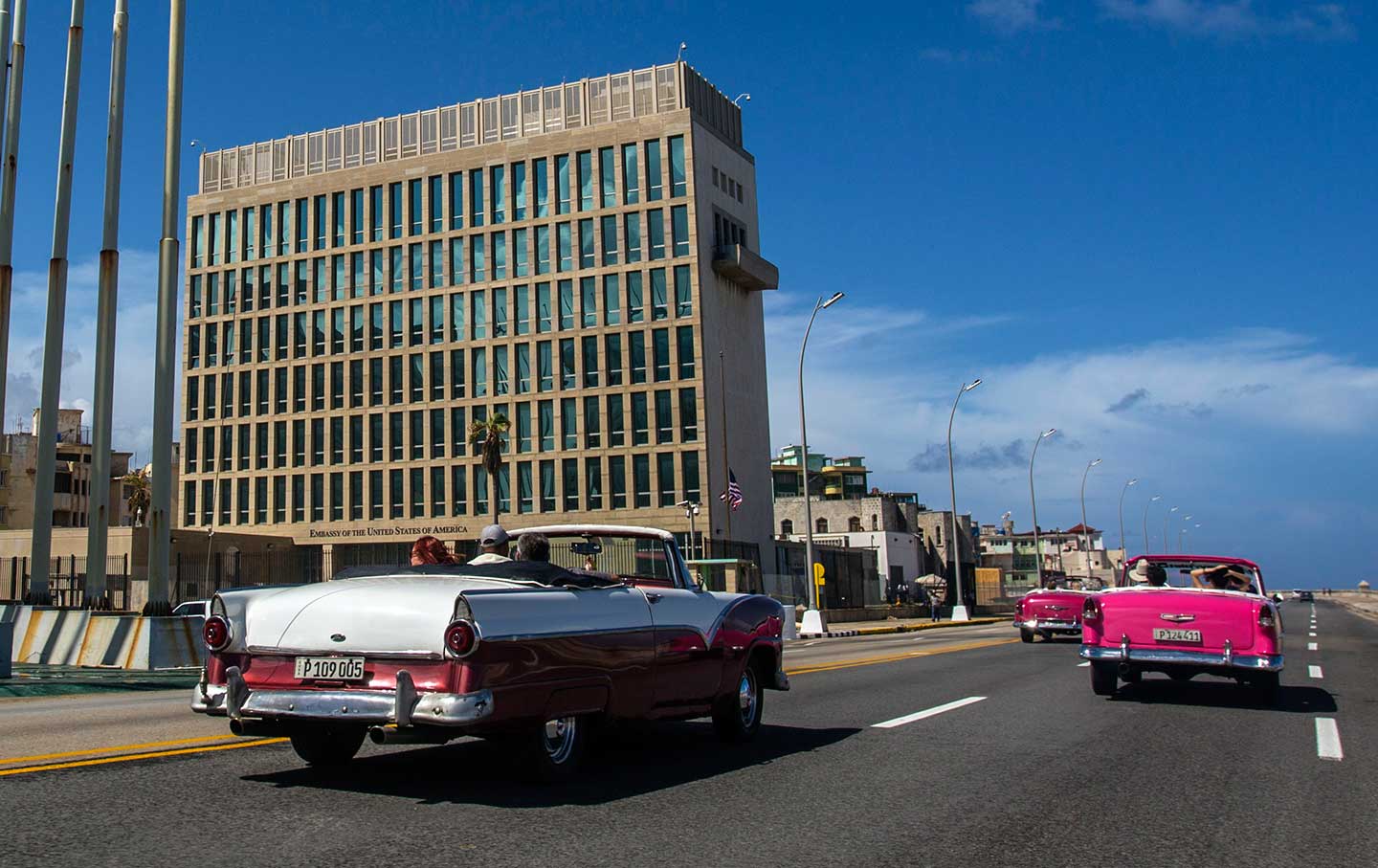What the US Government Is Not Telling You About Those Sonic Attacks in Cuba
The key victims were CIA agents. Not a single tourist was affected, and the island remains among the safest countries in the world to visit.
By Peter Kornbluh
YESTERDAY 2:46 PM

Tourists ride classic convertible cars on the Malecon beside the United States Embassy last October in Havana, Cuba. (AP Photo / Desmond Boylan)
When the Journal of the American Medical Association (JAMA) recently published a preliminary clinical evaluation of health problems suffered by US embassy personnel in Havana, the State Department seized the opportunity to reiterate a countrywide “health alert” on Cuba. “Discuss the JAMA article with a doctor if you have concerns prior to travel,” the department advised on February 14. “We encourage private U.S. citizens who have traveled to Cuba and are concerned about their symptoms to share this article with their doctor.”
The alert reflects an ongoing effort by President Trump’s State Department to frighten US travelers away from Cuba. Last September, when the administration announced a drastic 60 percent embassy staff reduction in Havana in response to the mysterious health maladies, the department issued a categorical warning to US citizens “not to travel to Cuba.” In early January, when the State Department issued a new safety ranking system for all nations, Cuba received a “level 3” designation—“Reconsider Travel: Avoid travel due to serious risks to safety and security.” In late January, a spokesperson for the Bureau of Western Hemisphere Affairs told The Miami Herald that, following the September alert, 19 US citizens had called to report health problems after traveling to Cuba—out of close to 620,000 travelers who visited the island in 2017—even though officials at the Bureau of Consular Affairs who fielded those calls readily admit that they took no steps to determine when, where, and how those illnesses occurred, and simply passed the callers on to the FBI. And last week, when the State Department determined that the embassy would not be restaffed and will “continue to operate with the minimum personnel necessary to perform core diplomatic and consular functions,” the department posted a long list of warnings for anyone thinking about traveling to Cuba—even though the island remains among the safest countries anywhere in the world for US citizens to visit.
The highly technical JAMA study, titled “Neurological Manifestations Among US Government Personnel Reporting Directional Audible and Sensory Phenomena in Havana, Cuba,” certainly sounds scary. The article summarizes initial medical findings on 21 of the 24 members of the US embassy community in Havana—diplomats, family members, and intelligence agents—who suffered a range of neurological-related symptoms from a still-unidentified source between late 2016 and August 2017. “Persistent cognitive, vestibular, and oculomotor dysfunction, as well as sleep impairment and headaches, were observed among US government personnel in Havana, Cuba, associated with reports of directional audible and/or sensory phenomena of unclear origin,” a team of doctors from the University of Pennsylvania’s Center for Brain Injury and Repair reported. “These individuals appeared to have sustained injury to widespread brain networks without an associated history of head trauma.”
. . .
The report, however, was accompanied by an editorial warning that the findings remain preliminary and incomplete. “At this point, a unifying explanation for the symptoms experienced by the US government officials described in this case series remains elusive and the effect of possible exposure to audible phenomena is unclear,” states the JAMA editorial. “Before reaching any definitive conclusions, additional evidence must be obtained and rigorously and objectively evaluated.”
More:
https://www.thenation.com/article/what-the-us-government-is-not-telling-you-about-those-sonic-attacks-in-cuba/
BigmanPigman
(51,590 posts)read regarding this issue. I read that the damage to the victims is permanent. Is there any info about this?
Nitram
(22,794 posts)been contradictory reports, and repeated statements that there is no conclusive evidence regarding what actually happened. I think the theory that the damaging signal was the result of interaction between different types of sound waves used for espionage purposes is intriguing. It is as plausible as theories that it was specifically designed to harm CIA officers. But who knows? It could also be an elaborate charade to damage relations with Cuba and discourage tourism there. Or a ruse to flush out counter-intelligence Cuban and/or Russian operatives in Cuba.